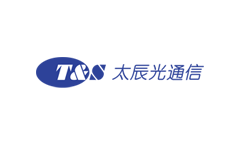The Difference Between 100G QSFP28 Fiber Optical Transceiver and 100G CFP4 Fiber Optical Transceiver

1. What is Fiber Optical Transceiver
The fiber optical transceiver is an optoelectronic device that performs electro-optical and photoelectric conversion. The fiber optical transceiver is a carrier, acting as the transmitting end to convert electrical signals into optical signals, and as the receiving end to convert the optical signals into electrical signals.
Fiber optical transceivers can be divided into SFP, SFP+, XFP, QSFP+, QSFP28, QSFPDD according to the packaging form, and the types of optical interfaces include SC and LC.
Fiber optical transceivers can be divided into 155M, 622M, 1.25G (1024M), 10G (10*1024M), 40G, 25G, 100G, 200G, 400G, etc. according to the transmission rate.
The higher the transmission rate of the fiber optical transceiver is, the shorter the transmission distance. According to the transmission distance, it can be divided into short distance (2KM and below), medium distance (10 to 20KM), long distance (above 30 to 40KM), including 550M, 300M, 2KM, 10KM, 20KM, 40KM, 60KM, 80KM, 100KM, 120KM.
The longer the wavelength of the fiber optical transceiver, the longer the transmission distance. According to the wavelength of transceiver, it can be divided into 850nm(MM), 1310(nm), 1550(nm), CWDM, DWDM
Fiber optical transceivers are divided into single-mode fiber optical transceivers and multi-mode fiber optical transceivers. Single-mode fiber optical transceivers are suitable for long-distance transmission; multi-mode transceivers are suitable for short-distance transmission. Therefore, the price of a single-mode fiber optical transceiver is a bit more expensive than that of a multi-mode fiber optical transceiver.
2. The difference between 100G QSFP28 fiber optical transceiver and 100G CFP4 fiber optical transceiver
The 100G QSFP28 fiber optical transceiver is suitable for a variety of transmission distances and application scenarios, which is mainly used in 100G Ethernet and EDRInfiniBand, and is an important part of the 100G network. It has the advantages of low power consumption, small size, high port density, etc., and is liked by the majority of customers.
The 100G CFP fiber optical transceiver has gone through CFP, CFP2, and now CFP4 fiber optical transceiver. The technology is mature and can support hot swap. However, its volume is larger than that of QSFP28 fiber optical transceiver, with few categories, and it is not suitable for many application scenarios.
CFP4 is specified by CFP MSA, and its size is slightly larger than that of QSFP28. The interface between MAC and PHY varies according to the application, and control and monitoring are achieved through the MDIO interface. Generally it is used for access networks and metropolitan area networks.
100G QSFP28 is specified by IEEE. It is smaller in size than CFP4. It is currently one of the 100G modules with the highest level of integration (CXP is more integrated). The interface between MAC and PHY is CAUI-4, and control and monitoring are achieved through the I2C interface. Generally it is used in data centers.
- +1 Like
- Add to Favorites
Recommend
- What Are the 40G QSFQ+ Fiber Optical Transceivers and Their Differences?
- What Impact Does The Growing Chatgpt Have on The Fiber Optical Transceiver Market?
- The Ultimate Guide to Fiber Optic Transceiver Modules
- What Are the Specific Classification Methods of Fiber Optical Products?
- Optical Transceiver Interoperability and Compatibility
- What is the Difference Between AOC and Optical Transceiver?
- Why Do 400G Optical Transceiver Prefer QSFP-DD?
- How to Achieve Precise Connection of Optical Fibers with Fiber Connectors?
This document is provided by Sekorm Platform for VIP exclusive service. The copyright is owned by Sekorm. Without authorization, any medias, websites or individual are not allowed to reprint. When authorizing the reprint, the link of www.sekorm.com must be indicated.





























































































































































































































































































































































































































































































































































































































































































































































































































































































